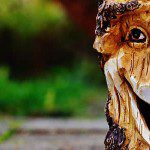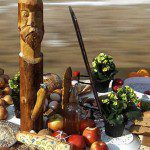Aah, that stroke of Midnight, and everything is afire as we embrace the New Year ahead. Besides getting sloppy drunk and kissing everybody in the room at the stroke of midnight, celebrants throughout the ages have observed numerous lesser-known New Year’s customs and superstitions. Many of the superstitions associated with the event bear the common theme that activities engaged in on that day set the pattern for the year to come. Others have to do with warding off evil spirits or attracting luck.
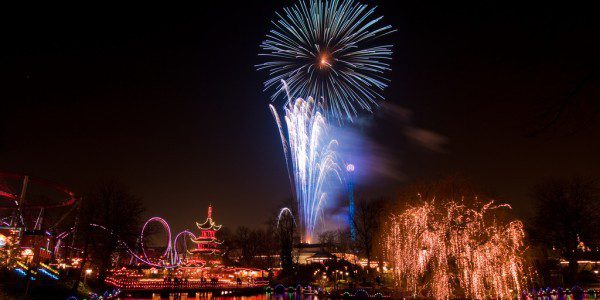
Nian
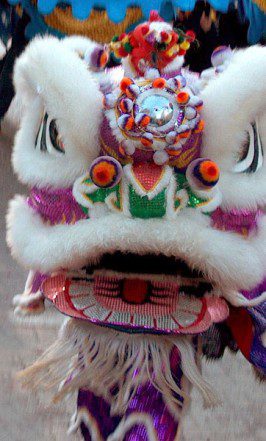
According to tales and legends, the beginning of the Chinese New Year started with a mythical beast called the Nian. Nian would eat villagers, especially children. One year, all the villagers decided to go hide from the beast. An old man appeared before the villagers went into hiding and said that he’s going to stay the night, and decided to get revenge on the Nian. All the villagers thought he was insane. The old man put red papers up and set off firecrackers. The day after, the villagers came back to their town to see that nothing was destroyed. They assumed that the old man was a deity who came to save them. The villagers then understood that the Nian was afraid of the color red and loud noises. When the New Year was about to come, the villagers would wear red clothes, hang red lanterns, and red spring scrolls on windows and doors. People also used firecrackers to frighten away the Nian. From then on, Nian never came to the village again. The Nian was eventually captured by Hongjun Laozu, an ancient Taoist monk. The Nian became Hongjun Laozu’s mount.
Dragons
The dragon is a popular figure, associated in particular with longevity and wealth. Inside the Chinese New Year costumes will be as many as 50 dancers, all twisting and turning the dragon’s long, silk body and blinking eyes. Since the Chinese believe that evil spirits dislike loud noises, they decorate their houses with plastic firecrackers in order to ward off any bad luck that the spirits might bring.
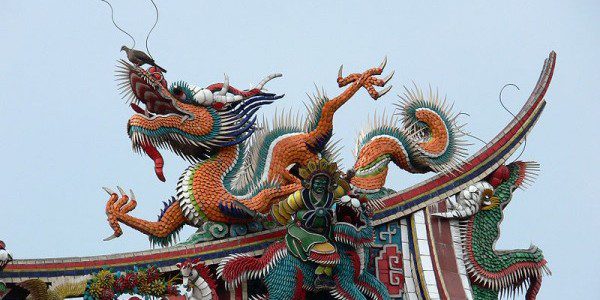
Hogmany
In Scotland, where the celebration is called “Hogmany” (derived from a type of oat cake which was traditionally given to children on New Year’s Eve), it is believed that there cannot be a New Year until the Old Year has gone. Since the Old Year is considered evil and must be banished, an effigy of Death is paraded around the town or city and is then buried, drowned or burned. This dummy may be made of straw, twigs or rags and is known as the “Auld Wife.” In some villages, barrels of tar are set alight and rolled through the streets. Thus, the Old Year is burned-up and the New Year allowed to enter. Preparations for the New Year include the cleaning of houses, believed to be an ancient purification ritual. In years gone by, burning juniper bushes would be carried through the home to remove any lurking germs and diseases. The traditional New Year meal consisted of Haggis, shortbread, scones, oat cakes, cheese, whiskey, wine and New Year black buns. The first person to rise in the morning would take the “Het Pint,” a spiced ale, to those family members who were still in bed.
One of the traditions is “first-footing.” Shortly after midnight on New Year’s eve, neighbors pay visits to each other and impart New Year’s wishes. Traditionally, First foots used to bring along a gift of coal for the fire, or shortbread. It is considered especially lucky if a tall, dark, and handsome man is the first to enter your house after the new year is rung in.
Jack Straw
In Hungary effigies of a scapegoat known as “Jack Straw” are burned. These effigies represent the evils and misfortunes of the past year. “Jack Straw” is carried around the village before being committed to the flames.
Bleigiessen
New Year’s Eve in Germany is a rather quiet affair compared to many other nations. It is a time for family gatherings and parties tend to be low-key, consisting of relatives and close friends. At midnight, a toast is customarily made with champagne or Sekt and everyone says, “Prosit Neujahr!. Often, there are firework displays which people usually watch from the windows of their homes. One popular custom is Bleigiessen, where a candle is lit and small chunks of lead are melted in a spoon held over the candle. The molten lead is then quickly dropped into cold water, whereupon it hardens almost immediately. Each person then tries to determine what he or she “sees” in the hardened lead figure in an attempt to tell the future from the shape which forms. Often, the lead figure is held up to the candle or other light in order to better discern the shape from the shadow which it casts. A heart or ring means a wedding…a ship foretells of a journey…a pig signifies plenty of food. Today, Silvesterblei kits may be purchased from most German department stores, complete with lead nuggets, a spoon and a list of possible shapes and their meanings.
Ogoh-Ogoh
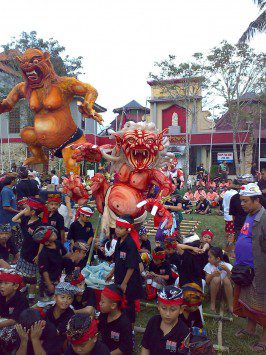
On Bali giant ogoh-ogoh monsters lurk beneath the palm trees. Sporting elongated fangs, bulging eyes and wild, scary hair, these 15-to-20-foot papier-mâché effigies are perhaps the most important part of Nyepi, the Balinese New Year.
In the month leading up to Nyepi Day, neighboring villages compete to build the scariest, most disgusting-looking ogoh-ogoh imaginable. The monsters symbolize evil spirits that surround daily life.
You might see a colossal green-skinned demon battling a red devil that burst from the demon’s own torso. One ogoh-ogoh may sport the head of a dragon with foot-long fangs and spiked bracelets. Another may have its fanged mouth open and claws raised, as if ready to devour passersby.
Ogoh-Ogohs are paraded through villages. As gamelan musicians pound out a beat on traditional metal xylophones and gongs, spectators are encouraged to stomp their feet, beat on drums and scream as loudly as humanly possible. It’s all part of a carnival-like exorcism aimed at driving the evil spirits away.
Guoduo
Tibetans like to start off the new calendar year with a fresh start. To this end, they celebrate the Driving-off-the-Evil-Spirits festival every 29th day of the last Tibetan Month. The biggest celebration takes place at the Potala Palace in Lhasa, with smaller celebrations taking place in monasteries throughout Tibet.
The festival is known as Guoduo in the Tibetan language, since that word means “driving out evil spirits.” The Tibetans believe that driving evil spirits away prepares the way for a more auspicious new year that will bring good weather, great harvests and long life to all.
Lhasa residents begin the day with religious activities, including sacred dancing at the Potala Palace, the center of Tibetan Buddhist society, and formerly the home of the Dalai Lama. Tibetans will then go to Guru Square where they’ll be given food to help drive off the evil spirits. Monasteries throughout the region also host activities, including dancing.
False Face
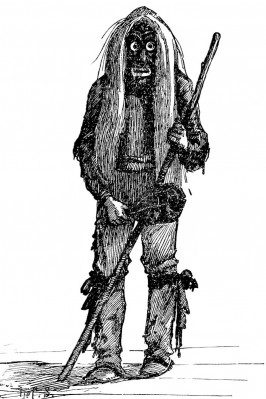
The Iroquois Midwinter Ceremony is a Native American event related to religious traditions and seasonal change. The history of this and other Native American cultures dates back thousands of years into prehistoric times.
The False Face Society is an Iroquois medicine society whose members are believed to possess the power to scare off the evil spirits that cause illness. This power resides primarily in the masks they wear, which are carved out of the wood of a living tree and have deep-set slits for eyes and large noses that often extend across the forehead with a spiny ridge or crease. The society holds its most important annual meeting in the longhouse during the Midwinter Ceremony, and its members participate in the ceremony’s curing rituals, often reaching into the hot ashes of a fire without burning their hands and rubbing or blowing the ashes on those in need of a cure. Although both men and women can belong to the False Face Society, only men are allowed to wear the society’s frightening masks.

Patheos Pagan on Facebook.
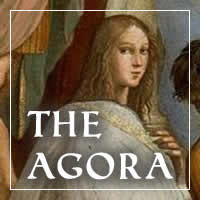
the Agora on Facebook
Outside the Circle is published twice monthly on Thursdays on Agora. Subscribe via RSS or e-mail!
Please use the links to the right to keep on top of activities here on the Agora as well as across the entire Patheos Pagan channel.


